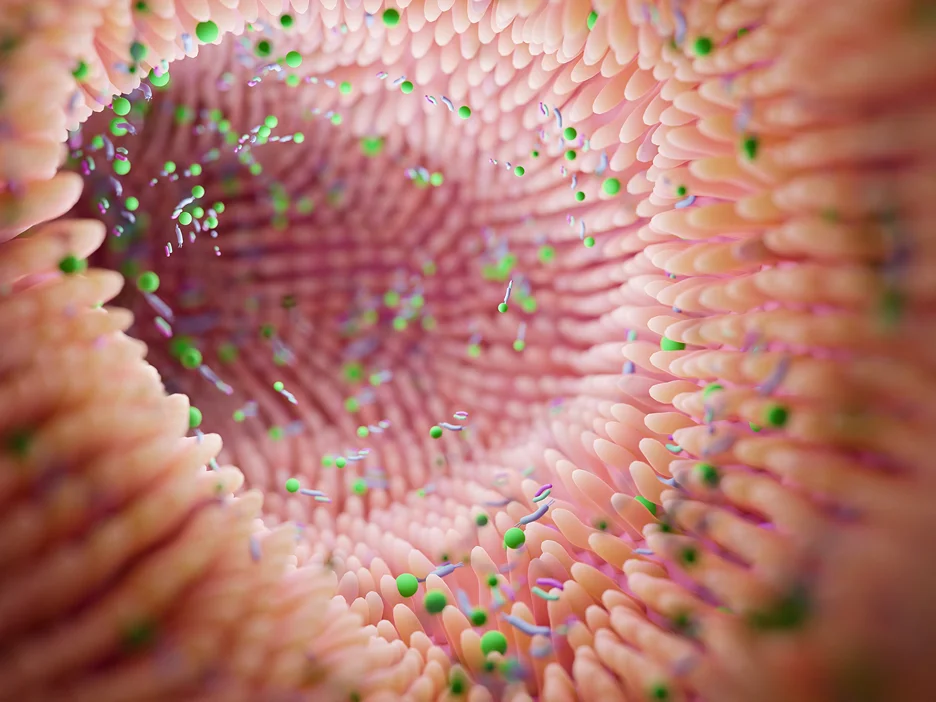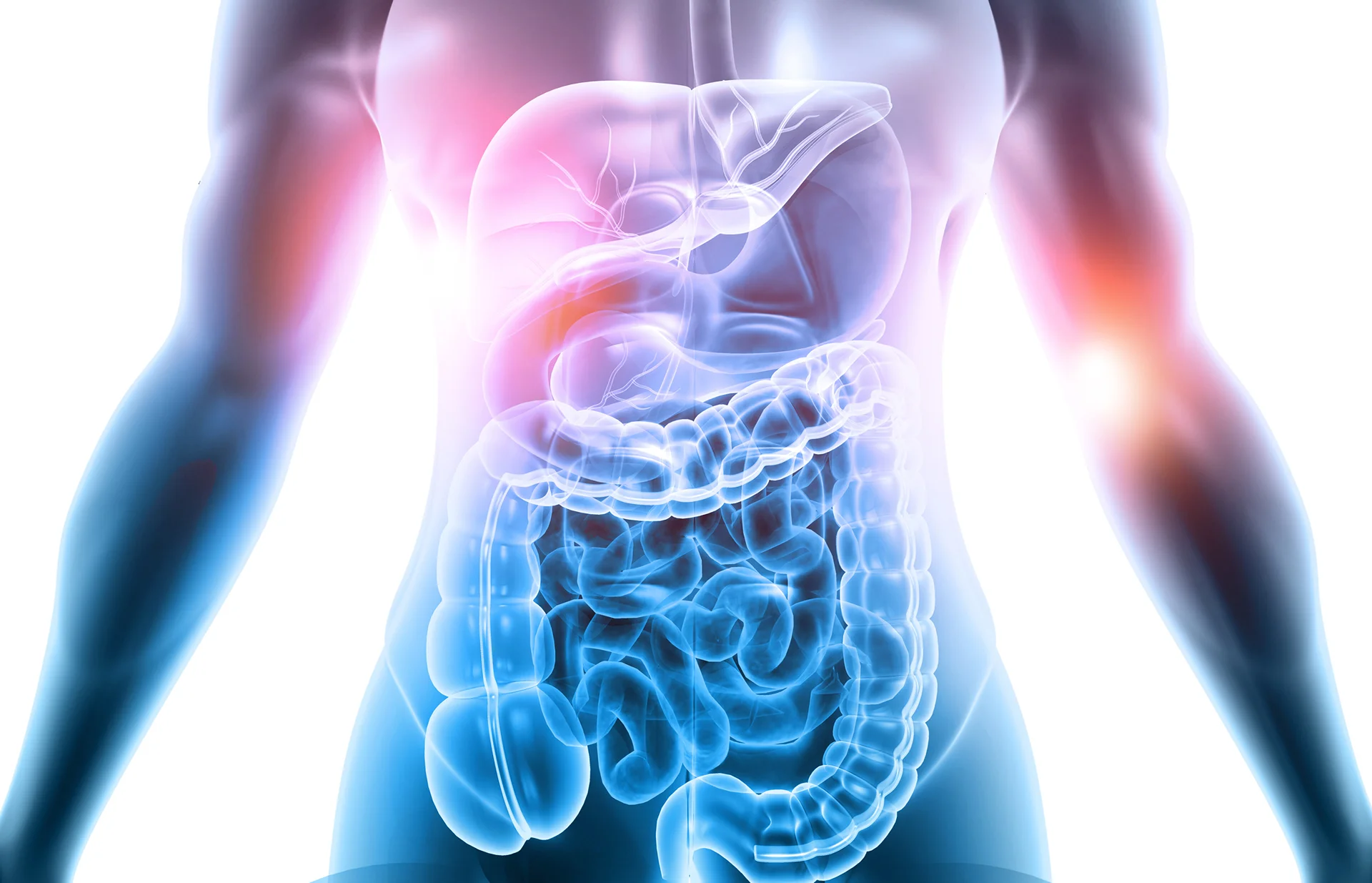Now, you might be thinking, “DAO, what’s that?” Let’s break it down in a way that’s as fun as mixing Mentos with Diet Coke (though probably a lot safer).
Diamine oxidase is a bit of a superstar when it comes to enzymes in your body. It’s like the body’s personal bouncer at a club, keeping out unwanted guests—in this case, histamine, a compound that can cause inflammation and allergic reactions.
The DAO enzyme breaks down histamine, ensuring it doesn’t crash the party that’s your body’s delicate balance.
Now, imagine what could happen if there was a hitch in this system?
What if, instead of breaking down histamine, DAO started to form tumors? Sounds like a plot twist, right? That’s precisely what we’re going to explore in this comprehensive examination of the relationship between DAO and tumors.
The Biology of Diamine Oxidase
Fasten your seatbelts, folks, as we’re about to take a whirlwind tour through the extraordinary world of diamine oxidase (DAO).
Think of DAO as the Swiss Army Knife of enzymes—it’s versatile, indispensable, and always there when your body needs it!
Diamine Oxidase Activity: What it Means and Why It Matters
Just like how the heart’s constant beating keeps us alive, the ceaseless activity of DAO is vital for our wellbeing.
The action-packed life of this enzyme involves breaking down histamine, a compound found in our bodies that, in excess, can be about as welcome as a mosquito at a barbecue.
The Properties and Functional Aspects of DAO
DAO isn’t just a one-trick pony. This enzyme is like a multitasking maestro, playing several roles in our body. Not only does it break down histamine, but it’s also involved in the metabolism of other biogenic amines (compounds derived from ammonia). In short, DAO is like the hardworking backstage crew that keeps the show (your body) running smoothly, even when the spotlight isn’t on them.
Expression of Diamine Oxidase in Normal Tissues and Cells
DAO isn’t a lone ranger. It’s found in various tissues and cells throughout the body, especially in the kidneys and intestines. You could think of these places as DAO’s ‘home bases’.
But here’s the kicker: the expression of DAO can change depending on different factors, including diet, alcohol, and certain medications. It’s kind of like how your mood might change depending on the weather, your sleep, or whether you’ve had your morning coffee.
Serum Diamine Oxidase Activity: A Look at the Studies and Developments
Just like how astronomers gaze at the stars to understand the universe, scientists study the activity of DAO in our serum (the fluid part of our blood) to gain insights into our health.
It turns out that serum DAO activity can serve as a useful biomarker for several conditions, including intestinal diseases and histamine-related disorders. The world of DAO is a rapidly developing field, and who knows what fascinating discoveries are just around the corner?
Diamine Oxidase and Histamine

Alright, it’s time to draw back the curtain on the dynamic duo of DAO and histamine. It’s a love-hate relationship, really. DAO loves breaking down histamine, and well, histamine— it’s not so fond of that.
Understanding the Histamine Content and Histamine Release
Histamine is like that friend who’s great in small doses but can be a bit too much when they overstay their welcome.
Normally, histamine plays a crucial role in our body’s immune response and acts as a neurotransmitter. But when it’s present in excess, it can lead to symptoms like headaches, hives, and digestive issues.
Here’s a quick look at where histamine can be found in the body:
| Location | Role of Histamine |
| Skin | Causes redness and itching during allergic reactions |
| Stomach | Helps produce stomach acid for digestion |
| Brain | Acts as a neurotransmitter to send signals in the brain |
| Immune system | Plays a key role in immune response |
Effects of Histamine: From Metabolism to Inflammatory Responses
Histamine can have different impacts on the body, depending on its concentration. Let’s take a peek at some of the effects of histamine:
| Histamine Level | Effect |
| Low | Normal body functions, such as digestion and immune response |
| Moderate | Allergic reactions, such as skin redness and itchiness |
| High | Serious conditions like anaphylaxis, a severe allergic reaction |
The Association Between DAO and Levels of Histamine
Remember how we said that DAO loves to break down histamine? Well, that’s where things get interesting. The amount of DAO in your body can directly impact your histamine levels.
Less DAO could mean more histamine hanging around and potentially causing problems. Think of DAO as a sort of histamine police, keeping things in check.
Histamine Intolerance: A Special Reference to Patients with Histamine Intolerance
Some people have a condition called histamine intolerance, where their bodies can’t break down histamine properly. This is often due to lower levels of DAO. Symptoms can include headaches, itching, nasal congestion, digestive issues, and more.
Diamine Oxidase in the Intestinal Mucosa
Now, let’s take a detour down to the gut. It’s here, in the intestinal mucosa (the lining of the gut), that our DAO superstar shines brightest.
Role of DAO in the Intestinal and Colonic Mucosa
Picture the intestinal and colonic mucosa like a bustling city, with DAO as the diligent street cleaner keeping things tidy. DAO is especially active in these areas, breaking down histamine and keeping things running smoothly. It’s a tough job, but someone’s got to do it!
Intestinal Diamine Oxidase: Its Importance in Maintaining Intestinal Permeability and Mucosal Integrity
The gut is a bit like a nightclub. It’s selective about who it lets in and who it keeps out. This selectivity is known as intestinal permeability. DAO helps maintain this permeability, ensuring that only the good stuff (like nutrients) gets in, and the not-so-good stuff (like pathogens) stays out.
In addition, DAO plays a crucial role in maintaining the integrity of the gut’s lining. Without enough DAO, the gut lining can become damaged, which can lead to a host of problems, including food sensitivities and autoimmune disorders.
Here’s a snapshot of DAO’s roles in the gut:
| Role of DAO | Impact if DAO Levels are Low |
| Breaking down histamine | Histamine may build up, leading to symptoms like bloating and diarrhea |
| Maintaining intestinal permeability | The gut may allow harmful substances to enter the bloodstream |
| Protecting the integrity of the gut lining | The lining may become damaged, potentially leading to food sensitivities or autoimmune disorders |
Impact on Villus Cells and Mast Cells in the Intestinal Mucosa
DAO has a particularly close relationship with certain types of cells in the gut, including villus cells (the cells lining the small intestine) and mast cells (cells that play a key role in the body’s immune response). DAO helps to regulate the activity of these cells, ensuring that they’re doing their jobs without going overboard.
It’s clear that DAO plays a crucial role in the gut, from breaking down histamine to maintaining the integrity of the intestinal lining.
Diamine Oxidase and Tumors: A Surprising Connection
Just when you thought you had DAO figured out, it throws a curveball. While DAO’s main gig is breaking down histamine, it’s also been found in a place we wouldn’t expect: tumors. This surprising connection is what we’re going to explore in this section.
DAO in Tumors: An Unexpected Finding
The discovery of DAO in tumors was like finding a fish out of water. Initially, it didn’t make much sense. But as scientists dug deeper, they found that DAO’s presence in tumors wasn’t just a coincidence.
Types of Tumors where DAO Expression has been Identified
DAO has been identified in a variety of tumors, each with its own unique characteristics. Here are a few examples:
| Type of Tumor | Characteristics |
| Ovarian tumors | DAO has been identified in both benign and malignant ovarian tumors. |
| Kidney tumors | DAO is often found in renal cell carcinoma, the most common type of kidney cancer. |
| Liver tumors | DAO is usually found in hepatocellular carcinoma, the most common type of primary liver cancer. |
What DAO Expression in Tumors Could Mean
DAO’s relationship with tumors is still something of a mystery, but there are some theories. Some scientists think that DAO could be a biomarker for certain types of tumors. Others believe that DAO might even play a role in tumor growth and progression.
DAO and Tumor Microenvironment: A Complex Interaction
The ‘tumor microenvironment’ might sound like a complicated term, but think of it like the neighborhood where the tumor lives. And just like any neighborhood, the conditions can have a big impact on the residents. DAO might influence the tumor microenvironment, potentially affecting how the tumor grows and develops.
DAO’s surprising connection to tumors adds another layer to our understanding of this versatile enzyme. But with every answer comes new questions, and there’s still so much to learn about DAO’s role in tumors.
Therapeutic Implications of Diamine Oxidase
As we’ve seen, DAO is an enzyme of many talents. But the potential of DAO doesn’t stop at histamine breakdown or its unexpected connection to tumors. DAO’s unique properties and roles also make it a promising target for therapeutic interventions.
DAO as a Biomarker
The presence of DAO in various tissues and its unique role in histamine degradation make it an interesting biomarker for certain diseases. For example, low DAO activity might signal histamine intolerance, while its presence in certain tumors could potentially be used for early detection and prognosis.
DAO Supplements for Histamine Intolerance
For people with histamine intolerance, DAO supplements could be a game-changer. By providing extra DAO, these supplements can help break down excess histamine and alleviate symptoms.
Potential Role of DAO in Cancer Treatment
The presence of DAO in tumors opens up a whole new world of possibilities for cancer treatment. If DAO does indeed play a role in tumor growth, then manipulating its activity could potentially slow down tumor progression.
Here’s a brief overview of the potential therapeutic roles of DAO:
| Potential Therapeutic Role | Explanation |
| Biomarker | DAO could be used as a biomarker for conditions like histamine intolerance and certain types of cancer. |
| Treatment for histamine intolerance | DAO supplements could help those with histamine intolerance by breaking down excess histamine. |
| Cancer treatment | Manipulating DAO activity could potentially slow down tumor progression. |
While these potential therapeutic implications are exciting, it’s important to remember that DAO is just one piece of the puzzle. More research is needed to fully understand its role in these conditions and how we can best use it to improve health outcomes.
Future Directions in Diamine Oxidase Research
The journey through the world of DAO has been fascinating, and there’s still much to explore. The potential of DAO in diagnostics and treatment is exciting, but as with any scientific journey, the path forward is filled with questions waiting to be answered.
Unraveling the DAO-Histamine Connection Further
While we know that DAO plays a crucial role in breaking down histamine, there’s still much to learn about this relationship. Future research could delve deeper into how variations in DAO activity can impact histamine levels, and how this, in turn, affects overall health.
Understanding DAO’s Role in Tumors
DAO’s presence in tumors is a puzzle that researchers are keen to solve. Future studies could focus on elucidating why DAO is found in certain types of tumors and whether it plays a role in their growth and development.
Exploring the Therapeutic Potential of DAO
The potential of DAO as a therapeutic target is vast. Future research could look into developing new DAO-based treatments for conditions like histamine intolerance or even cancer. Additionally, studies could explore the potential side effects and optimal dosages of DAO supplements.
Here’s a snapshot of potential future directions in DAO research:
| Research Area | Potential Questions to Explore |
| DAO-Histamine Connection | How do variations in DAO activity impact histamine levels and overall health? |
| DAO’s Role in Tumors | Why is DAO found in certain types of tumors, and does it play a role in their growth and development? |
| Therapeutic Potential of DAO | Can we develop new DAO-based treatments, and what are the potential side effects and optimal dosages of DAO supplements? |
Diamine Oxidase (DAO): A Recap and Conclusion

Diamine oxidase (DAO) is an enzyme that breaks down histamine, a compound involved in local immune responses and acting as a neurotransmitter. In the gut, DAO plays a crucial role in maintaining the integrity of the intestinal lining and in the regulation of the gut’s permeability.
DAO has also been found in various types of tumors, which has led researchers to investigate its potential role in cancer development and treatment. While this area of research is still in its early stages, the presence of DAO in tumors opens up new possibilities for early cancer detection and treatment strategies.
DAO’s role in histamine breakdown has made it a focus in the study of histamine intolerance. DAO supplements are currently being explored as a treatment option for this condition.
The future of DAO research holds promise, with potential areas of focus including further investigation into the DAO-histamine connection, understanding DAO’s role in tumors, and exploring the therapeutic potential of DAO.
In conclusion, DAO is a versatile enzyme with wide-ranging implications for human health. From its role in the gut to its surprising connection with tumors and its potential therapeutic uses, the study of DAO opens up a wealth of opportunities for understanding and improving human health.
As with any area of research, there are still many questions to be answered, but the journey so far has been both enlightening and promising.
